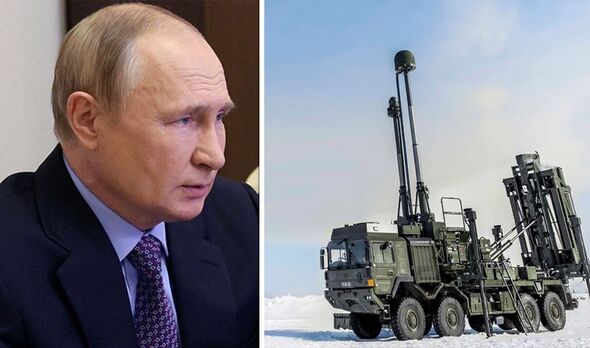Decades of cost-cutting have left Britain unable to defend itself against a missile attack, it has been claimed, with one expert describing the nation’s current capability as “woefully inadequate”.
Defence chiefs are believed to be looking at ways to improve the UK’s ability to defend critical infrastructure – for example, power stations, military bases and government buildings from the kinds of Russian cruise and ballistic strikes inflicting huge damage in Ukraine.
However, any so-called integrated air and missile defence plan would cost billions of pounds – necessitating an increase in the defence budget above and beyond the planned rise to 2.5 percent of GDP by 2030.
Months of relentless Russian artillery pounding have devastated a strategic city in eastern Ukraine, new drone footage shows, with almost no buildings left intact, homes and municipal offices charred and a town that once had a population of 12,000 now all but deserted.
The footage, obtained by the Associated Press, reveals the devastation inflicted on Chasiv Yar by Vladimir Putin‘s attacks.
But insiders have warned Britain is not in any position to prevent similar destruction, with one senior defence source, speaking on condition of anonymity, telling Sky News: “Can the UK defend its cities from the skies if there was a barrage of missiles? No.
“Do the public know what to do in the event of an air attack? No… Put simply, are we defended? No.”
The UK does possess air defence equipment – but there is no longer enough to offer protection to the huge number of buildings and other facilities the nation relies on.
As of now, the RAF has nine frontline fast jet squadrons – including quick reaction alert aircraft.
While modern fighter jets – F-35 and Typhoon – are a great deal more technologically sophisticated than predecessors, but by the end of the Cold War, the UK had no fewer than 30 frontline squadrons.
Meanwhile the Royal Navy’s six Type 45 destroyers are equipped with the country’s sole ballistic missile defence systems.
But just three are currently “available for operations”, a navy spokesperson said, including one currently on deployment on in the Middle East.
On land, six Sky Sabre ground-based air defence systems are each able to shoot down multiple missiles – but at least two, and probably more, are deployed overseas, with those in the UK only having a limited range.
Jack Watling, a senior research fellow at the Royal United Services Institute (RUSI), said the UK’s current air defences were “woefully inadequate”.
Britain does glean an advantage from its geography, with many other European NATO countries providing a barrier with Russia.
However, many of these nations have likely scaled back on their air defences since the collapse of the USSR.
Mr Watling added: “We always hear this argument from the Ministry of Defence that gaps in our own capability are acceptable because we’re part of an alliance.
“It’s a little bit like if you were going round to a ‘bring your own booze’ party and you said: ‘Well, there’s other people coming, so I’m not going to bring any alcohol’.
“If everyone adopts that approach, then there is simply nothing to drink. And when we look across NATO, there is an overall shortage [in air defences].”
A Ministry of Defence spokesperson said: “The UK is well prepared for any event and defence of the UK would be taken alongside our NATO allies.
“As part of our commitment to invest an extra £75bn for defence over the next six years, we continue to review potential opportunities to develop our capabilities and modernise air defence across Europe in close discussion with allies and partners.”
